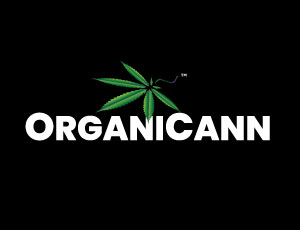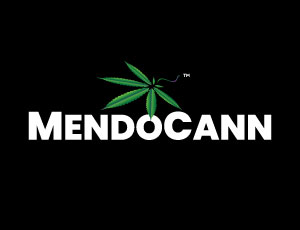37 Cannabis Terms You Should Know
37 Cannabis Terms You Should Know terms
 If you’re new to the world of legal cannabis, it can be a confusing place. Dispensaries offer overwhelming choices while employees and product packaging seem to have their own special language. Here are 37 of the most important cannabis terms you’re likely to come across.
If you’re new to the world of legal cannabis, it can be a confusing place. Dispensaries offer overwhelming choices while employees and product packaging seem to have their own special language. Here are 37 of the most important cannabis terms you’re likely to come across.
Aroma: While cannabis strain descriptions can be subjective, the inclusion of aromatic adverbs can help you determine some basic information about the strain once you understand terpenes. For example, strains that have a strong, lemony, citrus smell are high in limonene, a terpene that improves moods and aids digestion. Some of the more common aroma terms associated with cannabis are skunky, earthy, spicy, sweet and citrus.
BHO: This stands for butane hash oil. This is a form of cannabis concentrate that has been created with the solvent butane, or similar. Depending on the processing method, BHO can end up as shatter, wax or honey oil in its final form.
Blunt: Refers to cannabis rolled in tobacco leaves.
Bong: The preferred term for a bong is “water pipe” as it uses water to cool the smoke before inhalation.
Bud: Buds are also referred to as “cannabis flowers” or just “flowers.” They are the formed flowers on the cannabis plant harvested for processing into trimmed product or extracted oil.
Cannabinoids: These are the compounds that interact with the human endocannabinoid system to create the effects of cannabis, such as pain control, increase/decrease appetite, sedation, euphoria and mood. The most common cannabinoids are THC and CBD, however there are 100+ cannabinoids in existence.
Cannabis: Cannabis refers to either the genus Cannabis sativa or Cannabis indica plants. There is a third type, Cannabis ruderalis, that is uncommon due to its low THC content. Hemp is created from non-psychoactive cannabis plants that contain very little THC.
CBD: This is the abbreviation for cannabidiol, the second most abundant cannabinoid in cannabis. CBD has many medical applications including pain control and anti-seizure and anti-inflammatory properties.
C02 Extracts: Unlike BHO which uses butane and other harsh solvents to extract cannabinoids and terpenes, C02 extraction uses high pressure and is considered “solventless.” This means there is less risk of residual chemicals remaining in the finished product.
Concentrates: Also referred to as “extracts,” concentrates refer to any number of products made from concentrated oil extracted from cannabis plants. The finished consistency and color often dictates the name of the products, such as wax, budder, honey, oil, shatter and crumble.
Cone: see Pre-Roll
Clone: Also referred to as “cuttings,” clones are clipped from a mature cannabis plant and then cultivated into a new plant with its own root system. Clones are identical to the parent plant and have the same cannabinoid and terpene profiles.
Cross: see Hybrid
Dab: Dabbing refers to placing a cannabis concentrate on a very hot surface and inhaling the resulting vapors. A “dab” is the product being used. There are many types of set-ups for dabbing from homemade to high-end rigs.
Dispensary: A retail location licensed to sell cannabis.
Edibles: This refers to a huge variety of products that have been infused with THC or CBD. You can find everything from soda to artisanal chocolates.
Eighth: A common unit of packaged cannabis equal to 3.5 grams.
Flowers: see Bud
Hemp: Fibers from cannabis plants with no psychoactive effects are developed into an array of industrial and commercial products.
Hybrid: A plant resulting from crossbreeding strains.
Hydroponics: A soilless method of growing cannabis.
Indica: Refers to Cannabis indica, a genus of cannabis plant commonly associated with sedation and relaxation.
Indoor: Cannabis plants that were grown indoors under artificial light.
Joint: see Pre-Roll
Kief: This powdery substance is a collection of trichomes from the cannabis plant and are highly potent. Kief is the main component in the creation of hash.
Live Resin: Refers to cannabis extract created from freshly harvested cannabis plants using a freezing technique.
Marijuana: The preferred term is “cannabis.”
Pre-Roll: Pre-rolled cannabis cigarettes or “joints.” Also referred to as cones.
Sativa: Refers to the Cannabis sativa plant often associated with mental energy, euphoria and head-based effects.
Spliff: A combination of cannabis and tobacco rolled into a cone.
Strain: Strains describe cannabis plant varieties. Strains are cultivated to enhance desired effects and reduce less desirable traits. Strain names often give you a peek into a plants lineage which can help you determine whether it’s a strain you’d like to try.
Terpene: Refers to the compounds responsible for the aroma and flavor of cannabis strains. There are many types of terpenes and they occur naturally in all plants and trees. Terpenes also have their own medical benefits and work in conjunction with cannabinoids to provide effects that are unique to each strain.
THC: THC is the abbreviation for tetrahydrocannabinol, the most abundant and desirable cannabinoid in the cannabis plant. It is the cannabinoid responsible for the psychoactive effects such as euphoria associated with consuming cannabis. Cultivators are now producing cannabis plants with THC levels as high as 30%.
Tincture: A way to orally administer cannabis, this refers to a liquid product placed under the tongue, inside the cheek or added to a beverage.
Topical: A cannabis product applied topically to alleviate skin, joint and muscle problems. Does not produce a psychoactive effect.
Trichomes: Sometimes referred to as crystals, trichomes are actually resin glands on the cannabis plant. They are responsible for producing THC, CBD and all the wonderful cannabinoids that make up cannabis flowers.
Vaporizer: A device that heats cannabis material to release vapors which are then inhaled. This can refer to either flower or concentrated materials.


